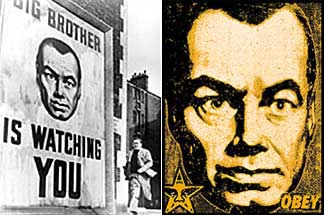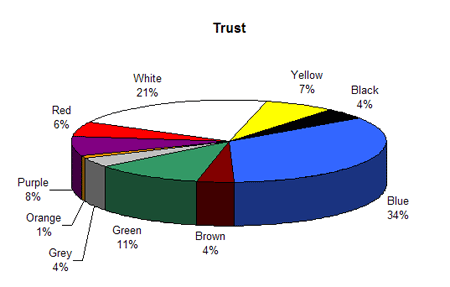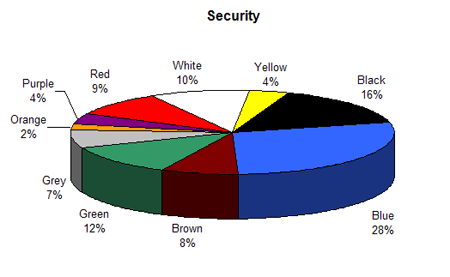

Ideas and practices for regularly gathering sources of inspiration, eliminating blocks to more easily access creative states, prolong them, and leverage their power to develop and execute great work.
http://www.slideshare.net/denisejacobs/the-art-of-disciplined-creativity-9915414
Denise Jacobs - Creativity habit links : https://delicious.com/denisejacobs/creativityhabit
"A hilarious montage of movies, both classic and obscure, creates a rapid-fire countdown."
(William Sloan, "Outstanding Short Films from International Festivals", Department of Film and Media, Museum of Modern Art New York)
"Exciting found footage filmed made up of 266 (classic) film fragments. Counting down from 266. Schreiner sought and found fragments from film classics and obscure reels of film to complete his task. With a great feeling for building up tension and tight editing, he holds on to the viewer's gaze."
(catalogue IFFR Rotterdam, 2006)
"The numbers from 266 to 1, all glimpsed in brief shots from hundreds of films, are counted down in a hypnotically progressive edit, the ultimate in brutally linear narrative structures."
(Paul Rooney, "Out of Darkness", Screenings of artists’ video in cinemas throughout the Midlands, Great Britain)
"Flag as inapproriate". This unconspicuous button with a flag icon appears underneath every single YouTube video we watch marking the limits of our freedom in the Internet. Once flagged by anonymous users, after being checked by the also anonymous YouTube team, a video quickly disappears forever. In exactly this process, Dominic Gagnon intervenes. He 'saves' the flagged videos before they are deleted and adds them to a dark and mythological collage of American survivalism. People have their say, who deeply mistrust the government, who warn their fellow citizens, and who arm themselves visibly. An unclear image emerges. While the protagonists are scared of the almighty American government, the viewer is irritated what to find the most threatening in this "hell": the United States of America, the critics armed to the teeth with conspiracy theories, or the anonymous censorship power of the companies which control the web. The protagonists of Pieces and Love All to Hell are mostly female, whereas in Gagnon's earlier work RIP in Pieces America (transmediale.10, see the video below on this page) they were mainly male.
Explore the world via Google Street View. MapCrunch teleports you to a random place in the world. It allows you to explore the vast array of imagery captured by Google in 40 countries, featuring spectacular scenery, magical moments and the utterly unexplainable.
History of Art, browse By Movement.
All news is local news. Local perspectives on global news. In your language.
We have indexed all newspapers and plotted their correct locations, in 39 countries. Might have missed some. And most newspapers in another 199 countries, a bunch of them not in their correct locations.
Research in the DIEM project is focused on understanding human vision during complex real-world scene perception. Because human visual perception involves active information seeking via eye movements, much of the work in the lab focuses on eye movements and human gaze control.
Topics of interest in the lab include fast scene recognition, visual search in natural scenes, visual memory and scene representation, eye movement control during static and dynamic scene viewing, and the integration of visual and linguistic information in natural contexts.
We are also interested in computational approaches to these questions and implementation of underlying processes in the human brain as revealed by neuroimaging techniques such as pupillary response, fMRI and ERP.
The last decade has seen an incredible growth in the production and distribution of images. The availability of unexpensive production means made amateur creativity increase exponentially, while the Internet provided a new platform of distribution for this kind of production, usually kept as private so far. In the meantime, videogames, virtual worlds and systems such as Google Street View provided this mass of prosumers with whole worlds that can be built, implemented through their own creative practice, documented and used as tools for the development of new images and new narratives. What is the impact of this process on art practice and on the artist – in the past, the only blessed depositary of the creative gesture? Which kind of dialogue is going on between amateur practices and codified languages?
Music Theory for Musicians and Normal People by Toby W. Rush
This collection is a work in progress, but if you would prefer, you can download all the current pages as a single PDF.
An interactive 3D visualization of the stellar neighborhood, including over 100000 nearby stars.
A tumblr about installation of piece of art.
This page lists the different number of flags and/or modifications made on the flags of current sovereign nations since beginning of the 18th century.
Most well known for his "Obey Giant" street posters, Shepard Fairey has carefully nurtured a reputation as a heroic guerilla street artist waging a one man campaign against the corporate powers-that-be. Infantile posturing aside, Fairey’s art is problematic for another, more troubling reason - that of plagiarism.


Imagine you're a game producer in the late 1980s, a week before the deadline and you still haven't got a cover for your game. Exhausted from crunchtime, you tell your illustrator to just rip off some Schwarzenegger action movie to get the job done. Careful, your subordinate might take the order all too literally! When artwork in video games seems to look too realistic to be actually drawn by the artist, then it actually might be too realistic, as many vintage games have stolen images from movies, album covers, paintings and even other games. The subject here aren't simply inspired designs or characters (in that case, we'd be here all day just counting the games influenced by Nausicaä, Hokuto no Ken or Alien), but actual specific images that might have been traced, digitized or just used as direct reference. This first page is reserved for print material that goes with a game release (covers, flyers, manuals, etc.), while on the next page we'll be diving into the games themselves. Some of these are well known, others more obscure, but they all have something in common: They would likely have gotten their artists sued if the original images' copyright holders had ever seen them; a gallery of litigations that could have been, so to speak.
The project, named Open Antarctica, would aim to initially document a region of roughly 2 miles surrounding the Palmer Station United States base on the Antarctic Peninsula.
Our first question was: wait, there's Internet in Antarctica? And yes, there is Internet access on the Antarctic bases — access that's provided over an awesome looking, though incredibly slow, satellite uplink. So slow, in fact, that we briefly thought about sending our contact down to Antarctica with a plug-in computer running a little LocalWiki server — but ultimately decided it was too much work for little gain.
The next thing we started thinking about was mapping. Maps are a core feature of LocalWiki, so having a good map of the area, particularly the area near the research station, was really important. And ideally we'd have some aerial imagery and not just a vector map. "Let's take a look at some maps of the area!" we thought.
http://www.cinexcellence.com/2011/05/complete-list-of-wilhelm-screams/
THE WILHELM SCREAM
is a popular stock scream used in countless films, tv shows, and video games. It was recorded in 1951 for Distant Drums, but found it's infamy when sound magician Ben Burtt snuck it into the films he was working on, especially Star Wars and Indiana Jones.
This video is a (pretty) complete collection of the films that The Wilhelm Scream has been in.
Note: There are different takes of the Wilhelm Scream from the original recording. The most popular version is take 4, but you will hear other versions as well.
The video accompanying our SIGGRAPH 2012 paper "Eulerian Video Magnification for Revealing Subtle Changes in the World". Read more about it here: http://people.csail.mit.edu/mrub/vidmag/
This article was researched by George Weber in the early 1990s and written up in 1995. It was first published in the now sadly defunct and still missed Language Today by the magazine's editor, Geoffrey Kingscott (a founder member of the Andaman Association), in December 1997 (Language Monthly, 3: 12-18, 1997, ISSN 1369-9733).
One of our most innovative, popular thinkers takes on-in exhilarating style-one of our key questions: Where do good ideas come from?
With Where Good Ideas Come From, Steven Johnson pairs the insight of his bestselling Everything Bad Is Good for You and the dazzling erudition of The Ghost Map and The Invention of Air to address an urgent and universal question: What sparks the flash of brilliance? How does groundbreaking innovation happen? Answering in his infectious, culturally omnivorous style, using his fluency in fields from neurobiology to popular culture, Johnson provides the complete, exciting, and encouraging story of how we generate the ideas that push our careers, our lives, our society, and our culture forward.
Beginning with Charles Darwin's first encounter with the teeming ecosystem of the coral reef and drawing connections to the intellectual hyperproductivity of modern megacities and to the instant success of YouTube, Johnson shows us that the question we need to ask is, What kind of environment fosters the development of good ideas? His answers are never less than revelatory, convincing, and inspiring as Johnson identifies the seven key principles to the genesis of such ideas, and traces them across time and disciplines.
Most exhilarating is Johnson's conclusion that with today's tools and environment, radical innovation is extraordinarily accessible to those who know how to cultivate it. Where Good Ideas Come From is essential reading for anyone who wants to know how to come up with tomorrow's great idea
The site started life as an illustrated reference book of weird and wonderful Gods. But when the first draft was put online, the concept exploded in all directions and demanded a site of its very own. Thus Godchecker.com was born.
Her artistic research is focused on video installations, photography and experimental films.
Strongly influenced by cinema, her language offers frequently traditional narrative elements and confronts them to other contemporary forms. Her artistic development has always been marked by the result of close collaborations with musicians and composers.
Halide is a new programming language designed to make it easier to write high-performance image processing code on modern machines. Its current front end is an embedding in C++
The "Water Light Graffiti" is a surface made of thousands of LED illuminated by the contact of water. You can use a paintbrush, a water atomizer, your fingers or anything damp to sketch a brightness message or just to draw. Water Light Graffiti is a wall for ephemeral messages in the urban space without deterioration. A wall to communicate and share magically in the city. Water Light Graffiti is a project of Antonin Fourneau (atocorp.free.fr/)
Image Atlas investigates cultural differences and similarities by indexing top image results for given search terms across local engines throughout the world. Visitors can refine or expand their comparisons from the 57 countries currently available, and sort by Gross Domestic Product (GDP) or alphabetical order.
Blog about new media art news
Le portail NetProjets a pour objectif de valoriser et de mutualiser les pratiques numériques dans les domaines de la culture, de la jeunesse, de l’éducation et du social. Il propose une base de données regroupant des fiches synthétiques de présentation de projets ou d’activités, menés avec des outils multimédia, en ligne et hors ligne, à destination du grand public.
Associations with color are defined, in part by Faber Birren (the author of Color Psychology and Color Therapy) by our senses, language, objects (or forms), and personality characteristics. color conveys moods which attach themselves to human feelings and our psychic make-up in an almost automatic fashion. This section presents the results of color associations and how they compare to other published studies.


Though photo manipulation has become more common in the age of digital cameras and image editing software, it actually dates back almost as far as the invention of photography. Gathered below is an overview of some of the more notable instances of photo manipulation in history. For recent years, an exhaustive inventory of every photo manipulation would be nearly impossible, so we focus here on the instances that have been most controversial or notorious, or ones that raise the most interesting ethical questions.